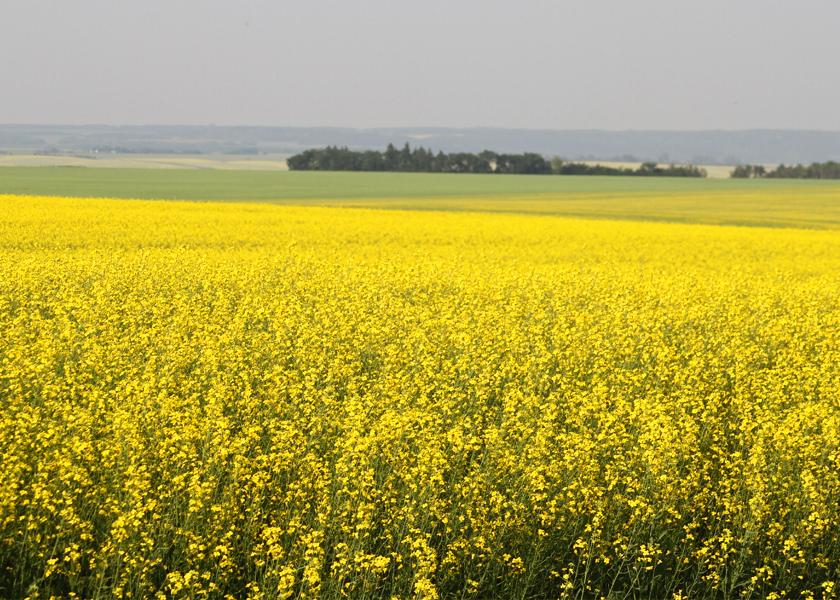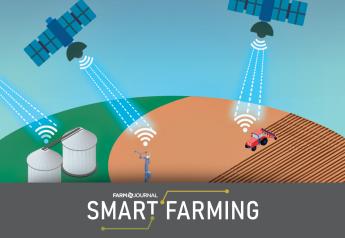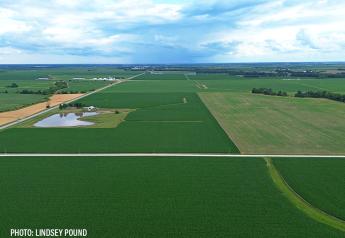Corteva's New Collaboration with Chevron and Bunge Could Turn Canola into a Cash Crop for Farmers

A new partnership between Corteva, Bunge and Chevron could turn canola into a valuable cover crop in the southern U.S. The goal is to increase the availability of vegetable oil to fuel the domestic renewable diesel market while also creating a new revenue stream for farmers.
The commercial collaboration will create proprietary winter canola hybrids that produce the valuable oil, while also featuring a lower carbon profile. The companies intend to introduce the winter crop hybrids in the southern U.S. as a double-cropping option for farmers to plant after soybeans or cotton is harvested from their fields.
“We’re pleased to work with Bunge and Chevron to bring a new option in the southern U.S. that will deliver solutions for farmers to increase productivity and sustainability on their acres, as well as contribute to the need for renewable and less carbon-intensive fuel options,” said Chuck Magro, CEO, Corteva Agriscience in the announcement.
“Rotational cover crops play a key role in our strategy to continue to develop next generation lower carbon feedstocks,” added said Greg Heckman, Bunge CEO. “As a leader in oilseed processing, we are pleased to work together with Corteva and Chevron to bring this crop innovation to farmers and process it into sustainable solutions for consumers. This is another step in our commitment to creating clear paths to support the decarbonization of the industry,”
Peter Meyer, grain and oilseeds economist with S&P Global Commodity Insights, says until recently, not a lot of people expected “Big Oil” to join forces with “Big Ag,” but the latest announcement from Corteva is further proof that these types of partnerships will continue to gain steam as the demand for renewable diesel grows.
“This week's announcement between Chevron and Corteva, along with Bunge, to plant, grow and harvest winter canola as a cover crop with cotton and soybeans in the Delta area, is the second announcement from Chevron and Bunge,” says Peter Meyer, grain and oilseeds economist with S&P Global Commodity Insights.
Meyer says the first partnership announced by the two companies was with CoverCress, whose largest investor is Bayer. The deal, aimed at growing pennycress as a cover crop, has already opened the door for 10,0000 acres of pennycress to be planted as a cover crop this winter.
“I think this week's announcement with Corteva really shows that Chevron and Bunge are in it to win it,” says Meyer. “And it also shows that despite the fact that we're going to have additional soybean crush capacity coming online here in two years, they don't want to rely just on that.”
Meyer points out that what could make this new canola venture so attractive for farmers is the fact farmers will not only be able to reap the conservation and carbon benefits of cover crops, but they can now harvest and ultimately profit from that cover crop, as well.
“We believe that this presents a tremendous opportunity to farmers for a second cash crop,” says Meyer. “This is an opportunity for you to not necessarily have to change your rotation, but this is an opportunity for you to make more money on your land, if you pay attention to what's going on around you.”
Meyer says as more crush plants come online, more announcements could follow, as these major companies are looking to expand their portfolio of crops they can crush for renewable diesel. That means they'll be looking for more farmers to grow the crops and expand planted acres. He says in the case of Corteva, Chevron and Bunge, the Southern U.S. is a geography they’re targeting due to where the crush plants will be located. The crush facilities originally were just targeting soybeans, but now canola could fill a void in the offseason.
“This way they can grow it in the winter, harvest it in the spring, then run it into those Bunge crush plants located in Louisiana and Cairo, Illinois,” says Meyer. “Then, they’ll wait for the spring planted crops to come in.”







